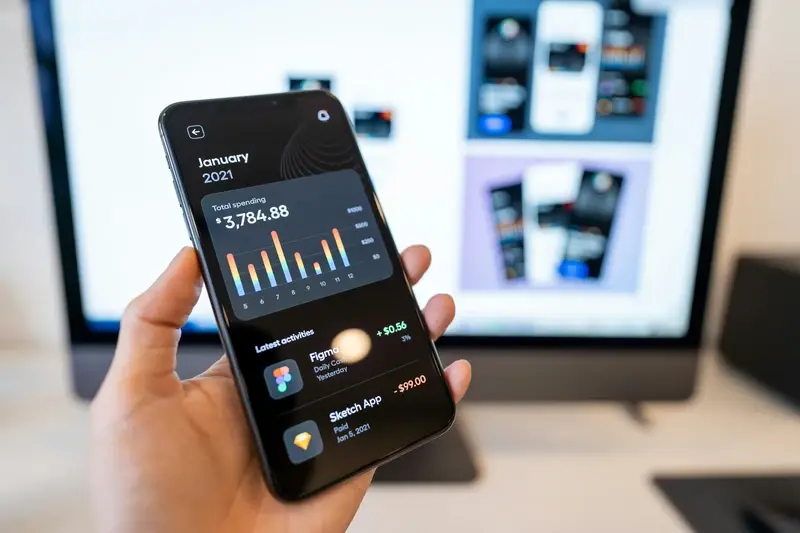How Do You Get Banking App Approval From Regulators?
Getting a banking app approved by regulators is one of the most complex challenges in the fintech world. I've worked with dozens of financial services companies over the years, and I can tell you that the regulatory process isn't something you can wing—it requires careful planning, meticulous documentation, and a deep understanding of what regulators actually want to see.
The financial compliance landscape has become increasingly strict, and for good reason. Banks and fintech companies handle people's money, personal data, and financial futures. Regulators need to be absolutely certain that your app won't put consumers at risk, won't be used for money laundering, and won't collapse under pressure when thousands of people start using it. That's a big responsibility, and the approval process reflects that.
The regulatory approval process isn't just a box-ticking exercise—it's about proving your app can be trusted with people's financial lives
What makes this particularly challenging is that the rules vary depending on what type of banking services you're offering, which countries you're operating in, and how you're handling customer funds. A simple budgeting app faces very different requirements compared to a full digital bank or a payment processing service. Some companies spend months preparing their applications only to discover they've missed a critical requirement that sends them back to square one. That's why understanding the entire process upfront is so important—it can save you significant time, money, and frustration down the line.
Understanding Banking App Regulations
Banking app regulations exist to protect people's money and personal information. Think of them as rules that banks and financial companies must follow when they create mobile apps. These rules make sure your banking app is safe, secure, and trustworthy for users.
The regulations cover several key areas that you need to understand before building your banking app. Security comes first—regulators want to know how you'll protect user data and prevent hackers from accessing sensitive information. They also care about how you handle money transfers, store financial records, and verify user identities.
Main Types of Banking Regulations
Different countries have their own banking regulations, but most cover similar ground. In the UK, you'll work with the Financial Conduct Authority (FCA) and the Prudential Regulation Authority (PRA). The US has the Federal Reserve and other agencies. Each has specific requirements for mobile banking applications.
- Data protection and privacy requirements
- Anti-money laundering (AML) compliance
- Know Your Customer (KYC) verification processes
- Payment Services Directive (PSD2) in Europe
- Consumer protection standards
- Technical security requirements
What makes banking app regulations tricky is that they're constantly evolving. Regulators update their requirements as new threats emerge and technology changes. This means you can't just check the boxes once and forget about compliance—it's an ongoing process.
The good news? Most regulators publish detailed guidelines explaining exactly what they expect from banking apps. Reading through these documents early in your development process will save you time and money later on.
The Regulatory Bodies You'll Need to Work With
Getting your banking app approved means working with several different regulatory bodies—and each one has their own set of rules, forms, and processes. The good news is that once you understand who does what, the whole regulatory process becomes much clearer.
In the UK, the Financial Conduct Authority (FCA) is your main port of call for fintech applications. They're responsible for making sure financial services companies follow the rules and protect consumers. If you're building a banking app that handles money, stores financial data, or provides payment services, you'll need their approval. The FCA takes financial compliance seriously, so expect thorough checks of your security measures, data protection policies, and business model.
Key Regulatory Bodies by Region
- United Kingdom: Financial Conduct Authority (FCA) and Prudential Regulation Authority (PRA)
- European Union: European Banking Authority (EBA) and local national regulators
- United States: Federal Deposit Insurance Corporation (FDIC) and Office of the Comptroller of the Currency (OCC)
- Australia: Australian Prudential Regulation Authority (APRA)
- Canada: Office of the Superintendent of Financial Institutions (OSFI)
Most countries also have data protection authorities that oversee how you handle personal information. In the UK, that's the Information Commissioner's Office (ICO). Don't forget about anti-money laundering requirements either—these often involve additional reporting to government agencies.
Start by contacting your primary regulator early in the development process. Many offer pre-application meetings where you can discuss your plans and get guidance on what approvals you'll need. This can save months of back-and-forth later.
Working With Multiple Regulators
Here's where things get interesting—you might need approval from several bodies simultaneously. A comprehensive banking app could require sign-off from financial regulators, data protection authorities, and even telecommunications regulators if you're offering SMS services. Each has different timescales and requirements, so plan accordingly.
Preparing Your Documentation and Compliance Framework
Getting your documentation right is probably one of the most tedious parts of the entire banking app approval process—but it's also one of the most important. I've seen brilliant apps get rejected simply because the paperwork wasn't up to scratch, and trust me, that's a frustrating way to lose months of work.
Your compliance framework needs to be rock solid before you even think about submitting your application. This isn't just a box-ticking exercise; regulators want to see that you understand the biggest risks in fintech development and how you'll handle people's money and personal data.
Core Documentation You'll Need
The documentation requirements can feel overwhelming at first, but breaking them down makes the task more manageable. Here's what most regulatory bodies will expect to see:
- Detailed business plan showing your app's purpose and target market
- Risk assessment documents covering operational, financial, and cyber security risks
- Data protection policies and procedures
- Anti-money laundering (AML) and know your customer (KYC) procedures
- Incident response plans for security breaches or system failures
- Staff training programmes and compliance monitoring procedures
- Financial projections and funding arrangements
- Technical architecture documentation and security measures
Building Your Compliance Team
You can't do this alone—and you shouldn't try to. Most successful banking app projects involve compliance specialists, legal experts, and sometimes former regulators who understand the system inside out. Yes, it's an investment, but it's one that pays off when your application sails through the approval process rather than getting stuck in endless revision cycles.
Remember, your documentation isn't just for the initial approval; it becomes the foundation for ongoing compliance monitoring throughout your app's lifecycle.
Security Requirements and Data Protection Standards
Right, let's talk about the bit that keeps fintech founders up all night—security and data protection. When you're building a banking app, you're handling people's most sensitive information: their money, their financial history, and their personal details. Regulators don't mess about with this stuff, and neither should you.
The regulatory process demands that your app meets specific security considerations in finance mobile app development before you even think about going live. We're talking about encryption protocols, secure authentication methods, and fraud detection systems that can spot suspicious activity faster than you can say "regulatory compliance." Your app needs to encrypt data both when it's sitting in your databases and when it's moving between your servers and users' devices.
Data Protection Fundamentals
Financial compliance isn't just about ticking boxes—it's about building genuine trust. Under GDPR and other data protection laws, users must have control over their information. They need to know what data you're collecting, why you're collecting it, and how long you'll keep it. You'll also need robust systems for data deletion requests and breach notifications.
Security isn't a feature you bolt on at the end—it needs to be baked into every layer of your application architecture from day one
Technical Security Measures
Multi-factor authentication isn't optional anymore; it's expected. Your app should support biometric authentication, device binding, and session management that automatically logs users out after periods of inactivity. Regular security audits and penetration testing will become part of your routine—think of them as your app's health check-ups. The good news? Once you get these foundations right, maintaining compliance becomes much more manageable.
Technical Standards and API Integration Requirements
Getting your banking app's technical setup right isn't just about making it work—it's about making it work safely and securely within the strict framework that regulators demand. The technical standards you'll need to meet go far beyond what most other apps require, and there's good reason for that.
Your app will need to connect with various banking systems through APIs, and these connections must be bulletproof. We're talking about Open Banking standards in the UK, which means your API integrations need to follow PSD2 requirements to the letter. The technical documentation alone can run into hundreds of pages, but don't let that put you off—most of it follows logical patterns once you understand how to create secure API integrations.
Core Technical Requirements
The regulators will want to see proof that your app meets these technical standards before they'll even consider your application:
- Strong customer authentication protocols that work across all devices
- Real-time fraud monitoring systems built into your API calls
- Data encryption both in transit and at rest using approved methods
- Secure session management with automatic timeouts
- Comprehensive logging of all transactions and system events
- Failsafe mechanisms for when API connections drop or fail
Testing and Certification
You can't just say your app meets these standards—you need to prove it through rigorous testing. Most regulators require independent security assessments and penetration testing reports. The testing needs to cover every possible scenario, from normal usage patterns to attempted security breaches. Your API integrations will be tested under stress conditions to make sure they can handle peak loads without compromising security or functionality.
The Application Process Step by Step
Right, let's break down the actual application process for banking app approval. This isn't something you want to wing—the regulatory process demands precision and patience. Most fintech companies find this stage both exciting and nerve-wracking because you're finally putting all your preparation to the test.
Initial Submission and Review
You'll start by submitting your complete application package to the relevant regulatory body. This includes all your documentation, technical specifications, security assessments, and compliance frameworks we've covered in previous chapters. The regulators will conduct an initial completeness check—think of it as making sure you've included everything on their checklist.
Once your application passes the initial review, you'll enter the detailed assessment phase. This is where things get interesting. Regulators will scrutinise every aspect of your app, from your data protection measures to your risk management procedures. They might request additional information or clarification on specific points.
Timeline and Key Milestones
The whole process typically follows this sequence:
- Application submission and acknowledgement (1-2 weeks)
- Initial completeness review (2-4 weeks)
- Detailed technical and compliance assessment (8-16 weeks)
- Regulator feedback and queries (2-6 weeks)
- Final review and decision (4-8 weeks)
Keep a detailed log of all communications with regulators. This documentation proves invaluable if questions arise later or if you need to reference previous discussions during the approval process.
Don't be surprised if the regulators come back with questions or requests for modifications. This is completely normal and shows they're taking your application seriously. Financial compliance isn't a box-ticking exercise—it's about proving your app can handle real money and real people's financial data safely.
Common Challenges and How to Overcome Them
Let's be honest—getting banking app approval isn't a walk in the park. I've worked with plenty of fintech companies over the years, and the same roadblocks keep popping up. The good news? Most of these challenges are completely avoidable if you know what to expect.
The biggest hurdle I see time and again is underestimating the documentation requirements. Teams often think they can wing it with basic security policies and a few API specs. Wrong! Regulators want to see everything—your incident response procedures, data retention policies, third-party vendor assessments, staff training records. The list goes on and on.
Documentation That Actually Gets Approved
Start your paperwork at least six months before you plan to submit. Yes, six months. Create a compliance checklist and assign owners to each section. Don't try to do this alone; you'll need legal experts, security specialists, and someone who actually understands banking regulations inside out.
Technical Integration Nightmares
API integration requirements can be a proper headache. Each regulator has different technical standards, and they're not always clearly documented. The smart move? Build your app architecture to exceed the highest standards from day one rather than retrofitting later.
- Build comprehensive audit trails for every user action
- Implement real-time fraud monitoring systems
- Set up automated compliance reporting tools
- Create detailed disaster recovery procedures
- Test everything with independent security auditors
The approval process will test your patience, but staying organised and planning ahead makes all the difference. Most rejections happen because teams rush the process or miss basic requirements—not because their app idea is fundamentally flawed.
Conclusion
Getting your banking app approved by regulators isn't something you can rush through or tackle without proper preparation. Throughout this guide, we've covered everything from understanding which regulatory bodies you'll need to work with, to preparing your documentation and meeting security requirements. The regulatory process for fintech applications is thorough—and for good reason.
The financial compliance standards exist to protect consumers and maintain trust in the banking system. When you're building a banking app, you're asking people to trust you with their money, their personal data, and their financial futures. That's not something regulators take lightly, and neither should you.
What I've learned from working with fintech clients over the years is that the teams who succeed are those who start thinking about regulatory approval from day one—not as an afterthought when the app is nearly finished. They build compliance into their development process rather than bolting it on at the end. They work with legal experts who understand the regulatory landscape. They invest in proper security infrastructure from the beginning.
Yes, the process can be complex and time-consuming. You'll need to prepare extensive documentation, implement robust security measures, and possibly navigate multiple regulatory bodies depending on your app's scope. But here's the thing—every legitimate banking app has gone through this same process. The ones that make it through are the ones that take it seriously and do the work properly.
The regulatory process isn't just about getting approval; it's about building a fintech product that people can trust and that will last.
Share this
Subscribe To Our Learning Centre
You May Also Like
These Related Guides

How Do I Ensure Regulatory Compliance When Developing A Mobile Banking App?

What Security Requirements Add to Financial App Costs?



